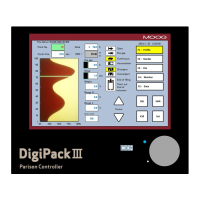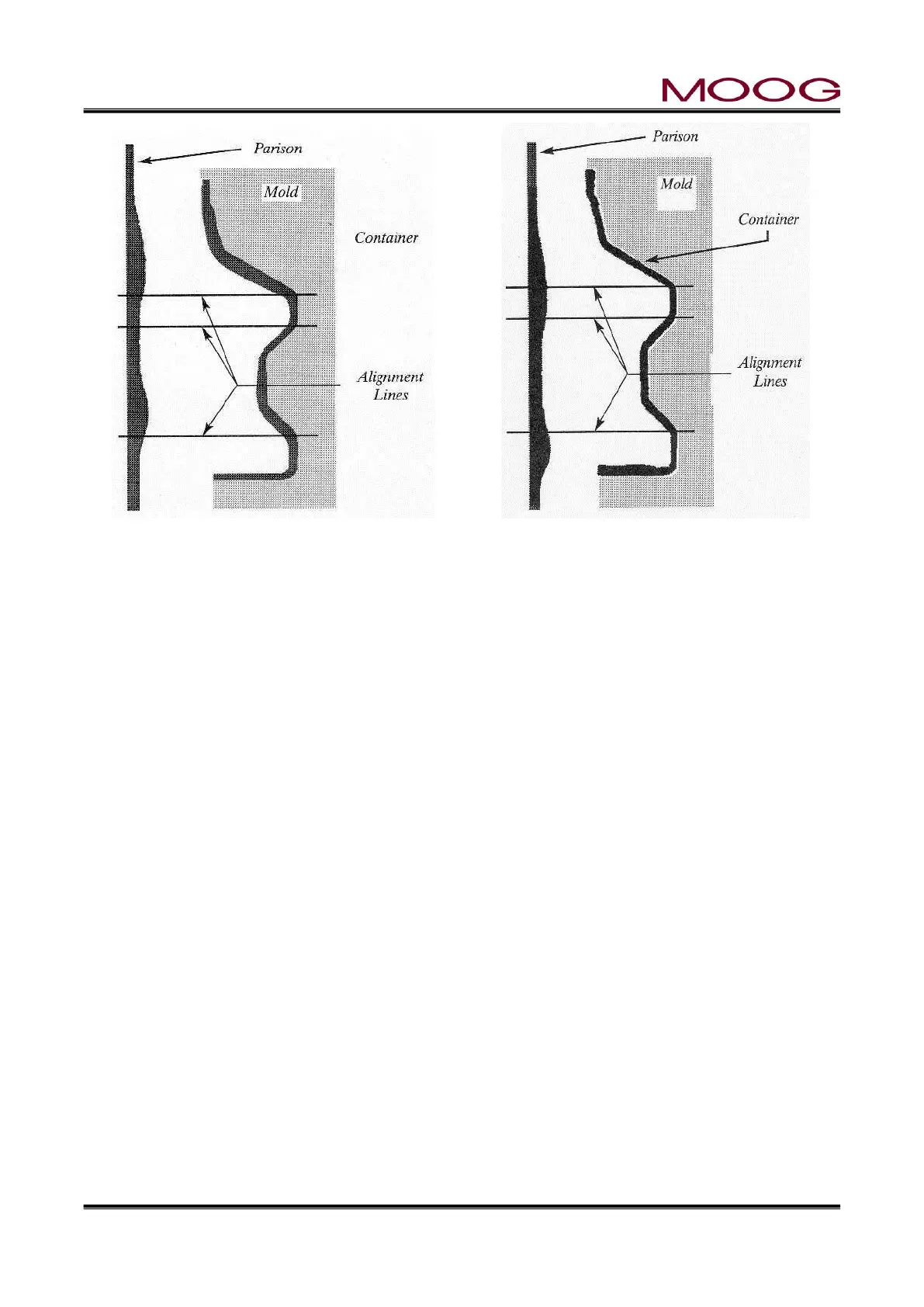© MOOG 2019
This document is subject to MOOG INTELLECTUAL AND PROPRIETARY INFORMATION LEGEND . The details are on page II.
Figure 2-4 Poor Vertical Alignment Between the
Parison and the Mold
Figure 2-5 Good Vertical Alignment Between the
Parison and the Mold.
2-2-8. PARISON MOLD ALIGNMENT
Alignment lines are reference lines that are displayed when cross-sectioning the positional relationship
between the parison wall thickness and the product wall thickness generated after molding by blow mold-
ing.
On the alignment line shown above in Figure 2-5, the parison wall thickness is relatively thick and the core
gap is large. Once the parison has been blown and molded, the wall thickness of the molded product
measured on the alignment line will be nearly constant with respect to the wall thickness measured in
other parts of the product.
However, if the vertical alignment relative to the mold of the parison is not accurate, the wall thickness will
not be constant throughout the product and the product will have to be discarded. (Figure 2-4)
Figure 2-4 and Figure 2-5 show the parison wall thickness and the relative vertical position of the mold.
When parison wall thickness is stretched by blow air pressure, the amount of drawing will change depend-
ing on the size of the inner circumference of the core. By programming the parison it is possible to produce
a product with the desired constant wall thickness by aligning the thick part and the largest part of the mold
inner part.
In the state shown in Figure 2-4, the parison position is higher against the position of the mold.
The wall thickness profile of the parison is the same as in Figure 2-5, but there is no alignment line position
for the mold. The product wall thickness on the top and bottom alignment lines is too large and the middle
alignment line thickness is too small.
Lowering the position of the parison against the mold, improves the consistency of the wall thickness of
the entire blow molded product and ultimately produces the correct result. However, if the parison wall
thickness is further changed here, the wall thickness control will become defective again.
Please note that the horizontal alignment line is displayed as a tool showing the vertical alignment require-
ments of the parison and the mold. The actual movement accompanying plastic blow molding and drawing
is more complicated.

